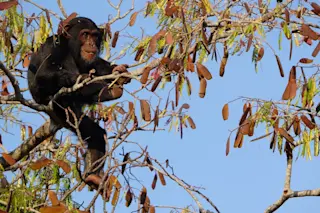You've probably heard about the extraordinary strength of many kinds of spider silk, but researchers in China say they've figured out another fascinating property of the silk—how it catches water in the air—and created their own copycat material. For a study in Nature, Chinese scientists looked at the small, non-poisonous cribellate spider's silk.
The secret, revealed by scanning electron microscope, lies in the silk's tail-shaped protein fibres which change structure in response to water. Once in contact with humidity, tiny sections of the thread scrunge up into knots, whose randomly arranged nano-fibres provide a roughly, knobbly texture [AFP]
. In between these knots are smooth areas where the fibers are neatly aligned, allowing water to slide along until it hits a knot, where dewdrops accumulate.
Armed with this knowledge, Jiang's team then replicated the spider fibres using polymethyl methacrylate, a synthetic polymer that was chosen because it bonds well with ...













